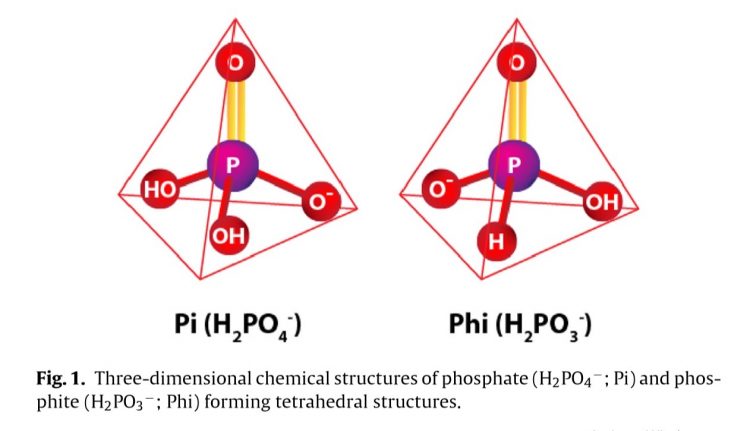
Phosphite a double-edged sword
Phosphorus is a major element in DNA and RNA, exists in structure of cell membrane phospholipids and the constitutive of ATP component in plants. This vital element not only has an important function in genetic inheritance, membrane structure, signal transmission path and plant’s metabolism but also, is essential for the survival of all creatures (include all plants) (Ashley et al., 2011). Phosphorus is the most inactive element and has low availability for plants in comparison to other essential elements in agriculture (Ramaekers et al.,2010).
It has been proved that phosphate (Pi) is a nutrient component of phosphorus and four oxygen molecule (PO₄³⁻) with its great effect on plant’s growth. Also, phosphite (PO3− 3) or phosphorus acid (H3PO3) has another feature for plants as a pesticide, supplementary fertilizer and biostimulant, in the last few decades (figure.1). This element as a biostimulant improves the uptake of other nutrients, develops root growth, increases plant’s resistance to biotic and abiotic stress and finally increases the function of plant.
Nobody has concluded the nutritional effect or the use of phosphite as fertilizer yet. In this text we try to ingeminate the results of various studies on phosphite and summarize the probs and cons of phosphite.

(Figure.1 : phosphite (PO3− 3) or phosphorus acid (H3PO3))
Phosphite as a biostimulant:
There is a lot of research about phosphite effects on plants function and one of these research is about, significant impact of phosphite on onions, celery, potatoes and peppers on improving product quality and yield (Rickard, 2000). On the other hand, there is a possibility of a negative effect of phosphite, so the most important thing before using phosphite is to study its effect on the plant species. And some studies about black mustard germination, canola cell culture and also hydroponic cultivation of tomatoes and peppers has shown that phosphite is not only a good source of phosphorus for these plants, but also slows down the growth rate and causes poisoning in the plant. Therefore, it can be said that in order to better understand the effect of phosphite on plant metabolism, more in-depth studies on this issue is needed.
Phosphite as a fungicide:
This element with its systemic movement in the plant, prevents the penetration of many diseases such as damping off, mildew, seedling death, fusarium, phytophthora and other factors. Due to the variety effects of this compound, severe fungal and bacterial diseases will not be able to develop resistance to this fungicide. On the other side, because of the proximity of this compound to nature, the destructive environmental effects of this fungicide are reduced to zero, and there is no article about the destructive effect of phosphite, not yet.


